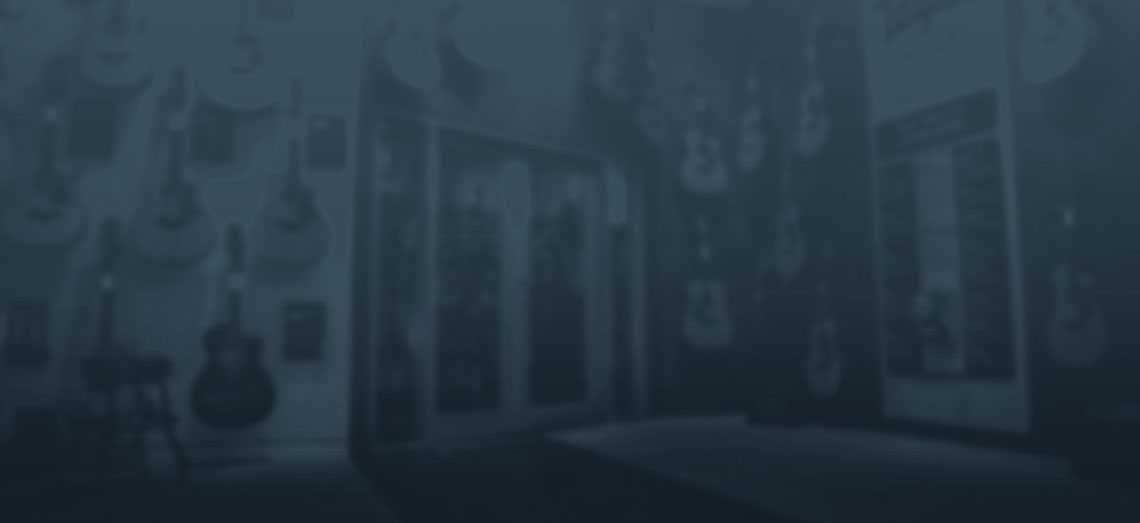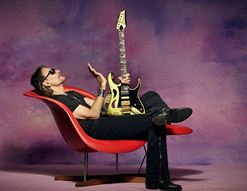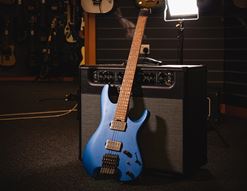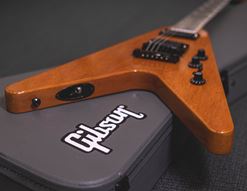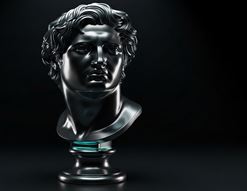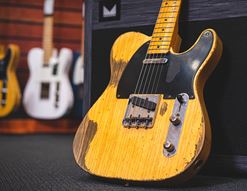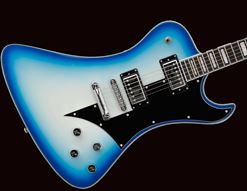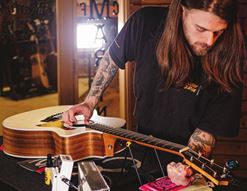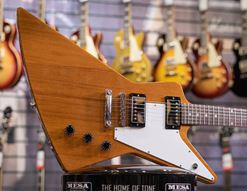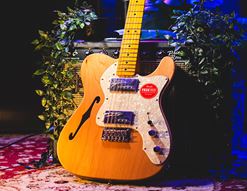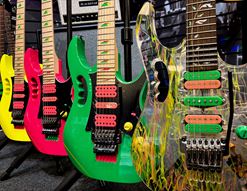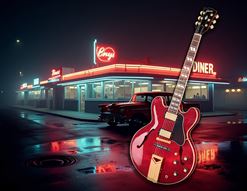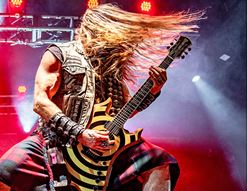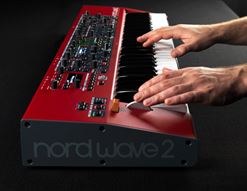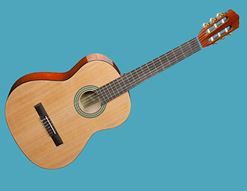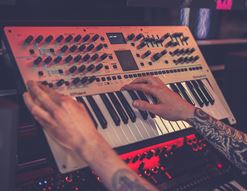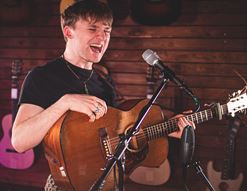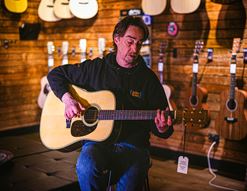Amplifiers are far more than anonymous boxes to plug your guitar into. They play an at least equal part in the creation of your tone as your guitar does! Many guitarists agonise over which guitar models to choose and then just pick any amp that fits the picture and pocket. This is especially true when you’re just beginning your guitar journey.
It’s totally understandable, but it’s something we want to correct!
This blog is dedicated to those who get a little confused over all the terms: valve, tube, virtual, solid-state, head, cabinet, combo...all of these things will be explained!
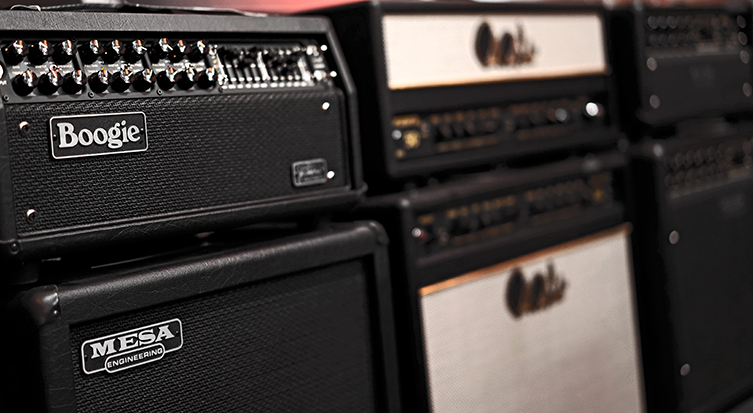
Tubes and Valves
Most of the famous guitar amps out there (those big Marshall amps you’ve seen on stages all your life and so on) used old, out-of-date, arcane technology to make their sound. We’re talking about valves. Tubes. Those big lightbulb-looking things that you can sometimes see glowing (they get HOT) inside some amps. People in Europe tend to call these things valves, whilst our friends across the Atlantic say ‘tubes’. It’s all the same!
Valves are, in guitar terms, divided into two types: preamp valves and power amp valves. This is actually quite a big subject but, generally speaking, preamp valves help shape the tone and power amp valves shape the tone and add the volume. Valves are consumables and will eventually need replacing. You’ll know when, because your tone will gradually ‘go South’ through no fault of your playing, or the valves themselves will straight-up blow like lightbulbs. Re-valving a tube amp is a less-than-simple process, though, so do some research on it before you dive in! Power amp valves (6L6, 6V6, KT88 etc) are the large guys and preamp valves (12AX7 mostly) and significantly smaller.
The alternative to valves is solid-state technology. Sometimes called transistor technology, these amps use analog or, more commonly these days, digital circuit boards to supply all of the tone and power. From simple analog two-channel amps to rather more sophisticated digital modelling amps, anything that doesn’t use old-fashioned vacuum tubes falls into this category.
Solid state technology, like valve technology, has pros and cons. These are largely determined by taste and practicality. For example, some guitarists think that solid-state amps sound harsh or ‘fake’ (which could actually mean a lot of things) compared to the more ‘authentic’ sounds of tube amps. This is becoming less and less true as the years progress and technology improves, though. Plus, that perceived harshness can actually be seen as a benefit, especially if you like harder and heavier music. Pantera, Black Flag, early Meshuggah, Crowbar? All solid state!
Solid-state amps also tend to be lighter in weight, making them easy to transport. A downside is that they tend to sound quieter when compared to valve amps with the same power rating. There are reasons for this that go beyond the scope of this blog but, for a general rule of thumb, it’s wise to go for as loud a solid-state amp as you afford, if you plan to play in a live context.
Digital What?
Digital Modelling. Amp designers have been forever working on ways to make solid state technology sound (and just as importantly, behave) like premium tube amps. Incrementally, technology has improved, processing has gotten bigger and, today, you can get a room full of the greatest amplifier tones known to man in a combo amp that costs only a couple of hundred pounds. Not only that, you normally get a plethora of exhaustively modelled effects pedal sounds included too, meaning that most beginner and student guitarists can now have all of the sounds they could ever want for very little cost.
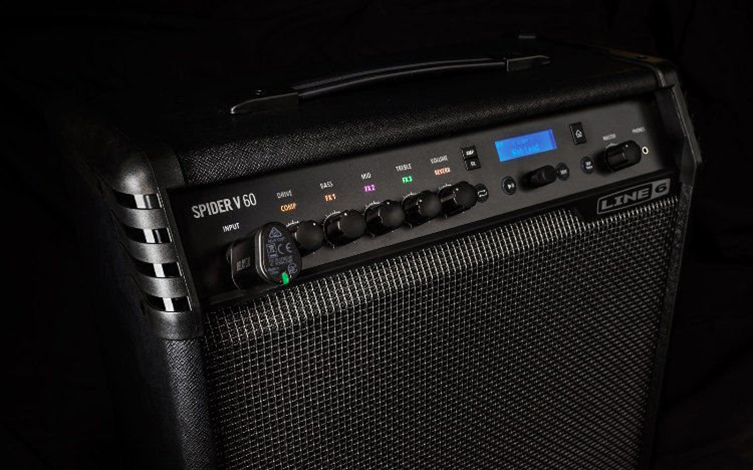
Sounds good? It is! For this type of thing, check out amps like (but not limited to) the Line 6 Spider, Vox VT, Blackstar ID Core, Yamaha THR ranges and many more. Most of these amps offer memory locations for saving your favourite combinations of sounds, with the added ability to recall them as presets directly from the front panel controls or from a footswitch.
Digital modelling is not so much about capturing the sounds of famous amps as much as it is about replicating the electrical signal’s behaviour as it passes through the original amp’s circuit, taking into consideration the physical influence and effects of the amp itself. This level of detail means that these virtual recreations ‘behave’ more like amps than ever before. The goal is to have a playing experience that is indistinguishable from that of a ‘real’ tube amp.
Top-drawer digital modellers like the Kemper and the Line 6 Helix are ‘real’ enough for ultra-discerning pros such as Mark Knopfler and King Crimson to use live in place of amps, something that would never have happened even ten years ago! This in itself proves how good technology has gotten at replicating these old methods. Less expensive modelling amps may not match the Kempers and Helixes for quite the same infinitesimal levels of minute detail, but most players (and, importantly, audiences) will not be able to detect any major differences.
Size is Everything
First off, you’ll have noticed that not every guitar amp is a huge wall of destruction straight from an AC/DC live show. Disappointed? Don’t be! Practise amps, which is what we collectively call the small, portable amps, may not actually be large but they sound bigger than ever!
This is largely down to the aforementioned digital modelling technology: inexpensive amp models with small speakers can now perform a great imitation of enormous, fire-breathing stacks, and at very low volumes too! It used to be that practise amps were somewhat compromised in terms of their sound, since with physical (i.e. non-modelling) amps, size plays a significant role in the production of sound. Players of past generations would put up with average tones since it meant they could play at home without provoking the collective ire of their neighbourhood. Today, world-class tones at speaking-volume levels is kind of expected! Progress!
The Patois
At this juncture, it may be wise for us to just quickly address certain terms and naming conventions. Once you’ve been a guitar player for a while, it can become easy to take these things for granted and forget that not everybody shares the lingo!
So, in basic terms, a ‘combo’ is a typical amp, that type you’ve probably had most experience of. It’s a combination of pre-amp (where the control knobs reside), the power amp section (which transforms the electrical voltage signal that started with your guitar’s pickup and turns it into a much larger signal that will work with speakers) and finally the speaker itself. These are all combined onto one enclosure. Examples of combo amps are endless, but for the sake of clarity, a Fender Hot Rod Deluxe is a combo amp, as is a Blackstar ID:30TVP.
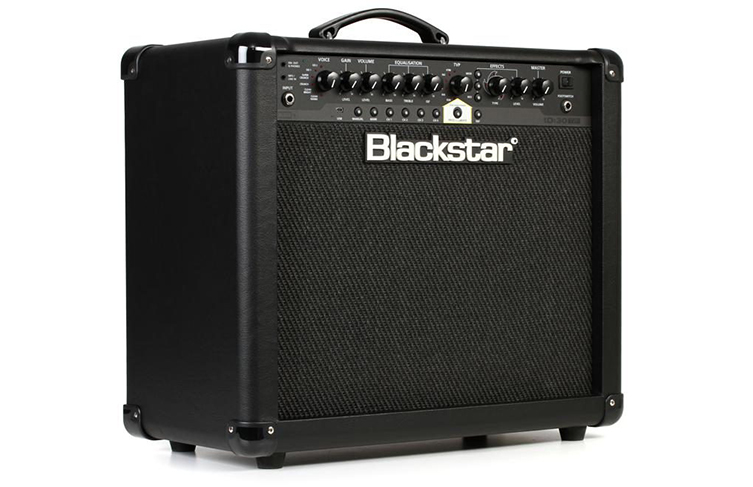
An amp head is a device that contains the pre-amp and power amp sections. These are placed together in a long enclosure that contains the front panel, which houses the control knobs. The head has no speakers in it and therefore will make no sound unless you connect it to a speaker cabinet.
A speaker cabinet is, as you’d expect, a collection of one or more speakers, housed inside a solid cabinet made out of anything from MDF to Baltic Birch. A famous example of such a thing would be the Marshall 1960A cabinet. It is what’s known as a ‘4x12’ since it contains four 12” speakers arranged in a cube formation and slanted back slightly (‘A’ is for ‘angled’: there is also a flat-fronted ‘B’ cabinet). An amp head sitting on a 4x12 cab is known as a ‘half stack’, and a head on top of two of these cabs is referred to as a ‘full stack’ or just a ‘stack’.
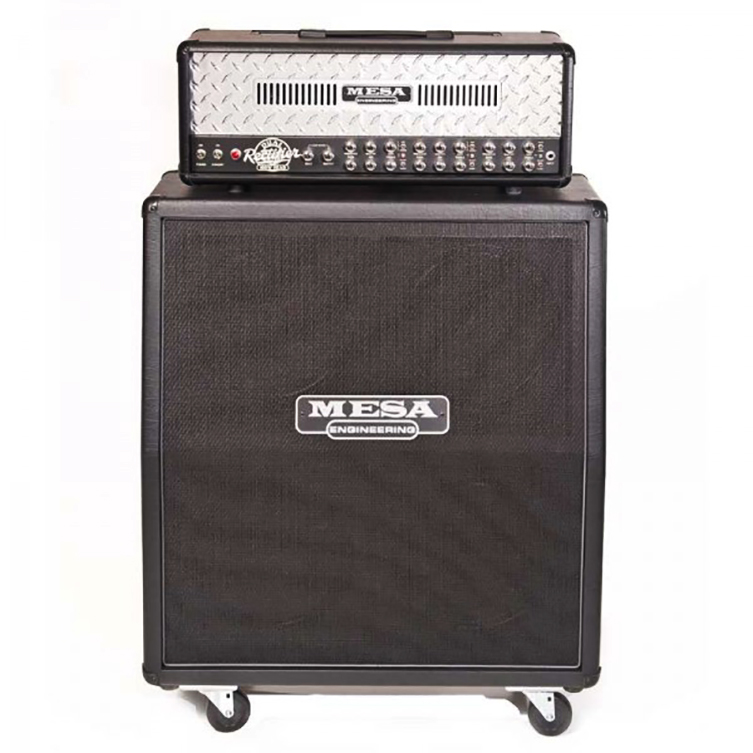
Why pick one over the other? Well, stacks used to be the only way you could get a huge sound. Digital technology today says otherwise, but lots of players still prefer to plug into a big stack, claiming that there is a difference in sound, feel and ‘dimension’. As such, if you like your sounds to be large, like with Rock and Metal styles, you’ll need an amp physically big enough to handle the job! There is definitely something about crunching out a big open E chord and feeling the sound waves hitting you in the back of the legs!
Yes, you should be using earplugs.
Combos are much more portable but produce a sound that is less ‘all-encompassing’. Blues, Jazz and Indie players typically get their sounds from smaller valve combos. Combos still generally give most players the live oomph they need though, and it’s a sad fact that these days, lots of live music venues simply won’t let you wind up your 100 watt tube mega-stack past about 1 ½ on the master volume anyway! As Acka-Dacka once said: ‘Rock ‘n’ Roll ain’t Noise Pollution!
Other brief terms to note in our amp terminology lexicon: ‘EQ’ just means equalisation and refers to the Treble, Middle, and Bass characteristics for your guitar sound. Some amps have more dramatic EQ curves than others, meaning more scope for tone-sculpting is possible.
‘Gain’ is essentially input volume: you turn up the input gain (which is really volume) and it overloads the preamp stage (overdrive) leading to pleasantly harmonic sounds. This is your typical ‘Rock’ sound. The harder you ‘drive’ an amp, i.e. the more you turn up the input volume (gain), the more overdriven, or ‘distorted’ your sound becomes. Distortion means sustain. High gain is simply lots of gain.
Effects loops are devices that wedge a theoretical space in between the preamp and power amp sections of your amp. This allows you, via a pair of ¼” jack inputs labelled ‘Send’ and ‘Return’, to connect bits of outboard gear, normally modulation and ambient effects devices, to the amp AFTER the preamp distortion and before the volume bit. Put simply, it just sounds better. An effects loop is where you stick your flanger, chorus, delay and reverb FX. An effects loop is NOT where you put your boosters, distortions and fuzz effects! No good can come from this so do not do it!
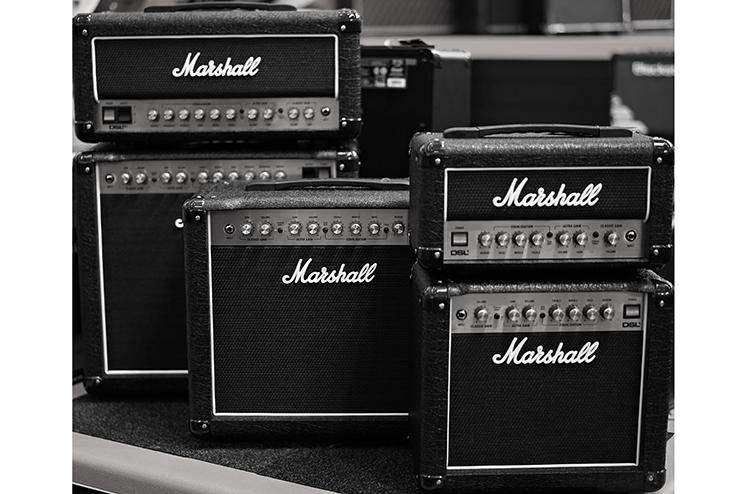
Bass Amps, Guitar Amps, Acoustic Amps...
We would definitely like to highlight one important point about the use of amps here. Using the correct amp for the instrument is the only real way to get the sounds you prefer. Bass guitars played through guitar amps will sound thinner than they should, just as guitars will sound flat and dull when payed through bass amps. It seems obvious to say but we do get asked about this! The same goes for acoustic amps: they have been designed to stay clean sounding, pristine and sharp, the opposite of guitar amps that are waiting to be overdriven! Using the correct tool for the job will get you the best results.
Volume!
Next, we should have a quick word about volume. It’s a sketchy subject, filled with terrifying (to us at least) physics, but there are one or two points to note. A great many guitarists get confused about wattage versus loudness. Wattage is not an expression of loudness, it’s an expression of power. Volume is measured in decibels, not watts. Say it out loud to yourself five times: ‘Wattage is NOT loudness!’.
It may be hard to believe, but technically, a 100-watt amp should only be TWICE as loud as a 10-watt amp. It’s ten times more powerful, but only twice as loud. We say should, because many other factors influence this. Some amp designs are just more efficient than others, so comparing amps that are similarly rated in wattage can often result in wildly different volume levels.
Headroom is another term you’ll hear a lot. Headroom basically refers to how much ‘clean’ loudness you have available before your sound begins to ‘clip’ and becoming overdriven. If loud clean sounds are required, an amp with a relatively high power rating and lots of headroom will get you that.
Conversely, distorted sounds tend to be paradoxically quieter than clean sounds when set to the same settings on the amp. The frequencies themselves are different, plus there is natural compression applied to the sound as a by-product of the distorting process, therefore you’ll need more power in the gain channel to achieve an equal volume levels to the clean. This is why your ‘heavy’ sound in your rehearsal room is not cutting though the way you want it to! Compressor pedals and careful EQ’ing can help (lose a little of the bass frequencies, boost your upper mids) here, but factors like room size and amp positioning will play a large part too.
Remember: an amp that’s too loud can be turned down, but an amp that’s too quiet will just never cut it.
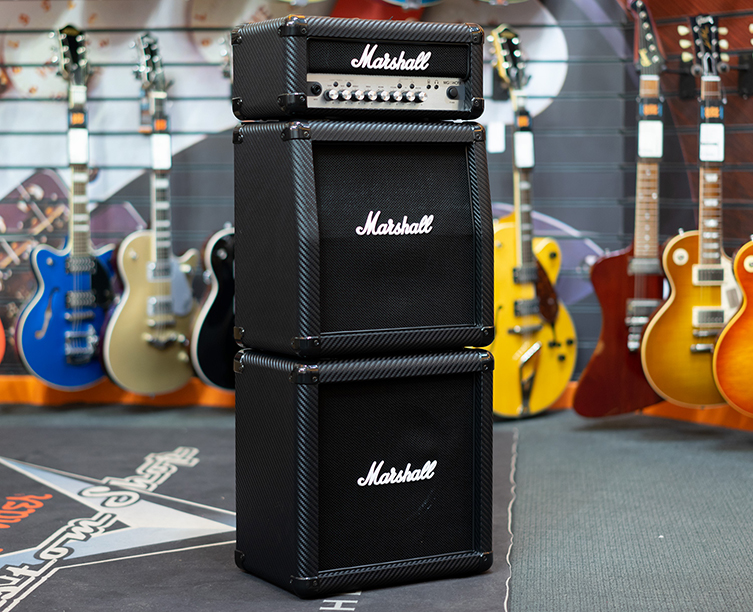
Amps for Jobs
So, what type of amplifier is good for what type of situation? There are a lots of amp models out there!
Ok let’s take a few situations and attach them to some appropriate amp types. These are merely suggestions: there are all kinds of ways to use all kinds of amps!
Practising at Home
Home practice is where small digital modelling combos come into their own. Benefits include small volume levels but big sounds, lots of instantly tweakable options, and a level of functionality (Line out, MIDI over USB, built-in loopers etc) that often surpasses bigger ‘gigging’ amps. Amps like Blackstar’s ID Core, Boss’s Katana and Line 6’s Spider ranges will be the type of amp on your longlist here. One word: it is probably worth buying a slightly bigger model -say, a 30-watt amp as opposed to a 15- due to the increase in features you normally get, not to mention the more satisfying sound you’ll enjoy from the larger speaker.

Small Gigs
For small gigs, the question is whether you plan to mic your amp up to the PA on not. If you do, small valve combos like a Vox AC15C1 or a Fender Blues Junior will be perfect. These are both rated at 15 watts and you’ll be able to wind them up to achieve that great ‘sweet spot’ that valve amps reach when they are pushed!
If you don’t want to mic your amp, you’ll need more power. Valve combos like the AC30C2, the Marshall DSL40 and the Fender Blues Deluxe are the type of amp that you’ll see on stages across the planet.
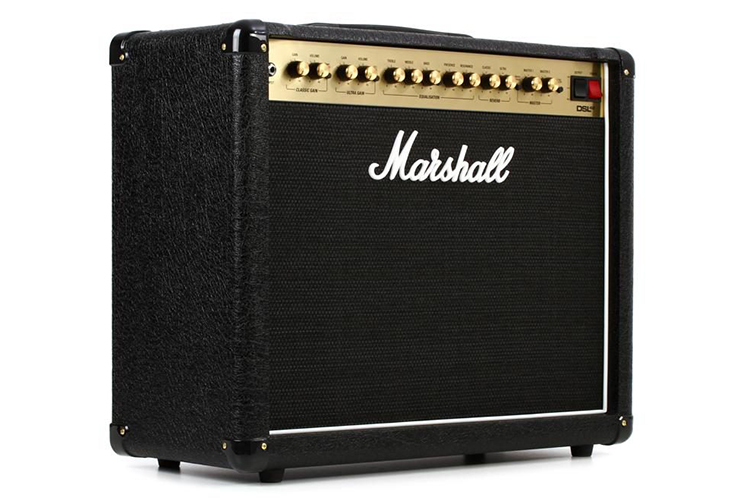
For solid state amps, we’d recommend the bigger modelling combos (look for those same ranges we mentioned earlier but this time choosing larger models: Boss Katana 50, Line 6 Spider 60, Blackstar ID:60TVP etc) to be able to get comfortably good volume levels to hear yourself on stage without additional monitor wedges form the PA system. Because solid state amplifiers tend to reach their peak volume long before the volume knob hits ten (dude to aforementioned efficiency issues with the circuit board design on many), you’d be well advised again to ‘go large’.
Larger gigs
For larger gigs, valve combos with 30+ watts are really needed, more so if you like a loud, clean sound. The market here is huge, and prices can vary wildly between Far Eastern production line amp and boutique, hand-made tube combos.
Please do bear in mind out previous comments regarding power rating and volume: comparing, say, two Fender valve combos of different sizes will display a difference in volume, but similarly rated amps form different brands will not necesarrily match up, volume-wise. We have found ourselves surprised in the past by Vox AC30 amps beating half-stack for volume!
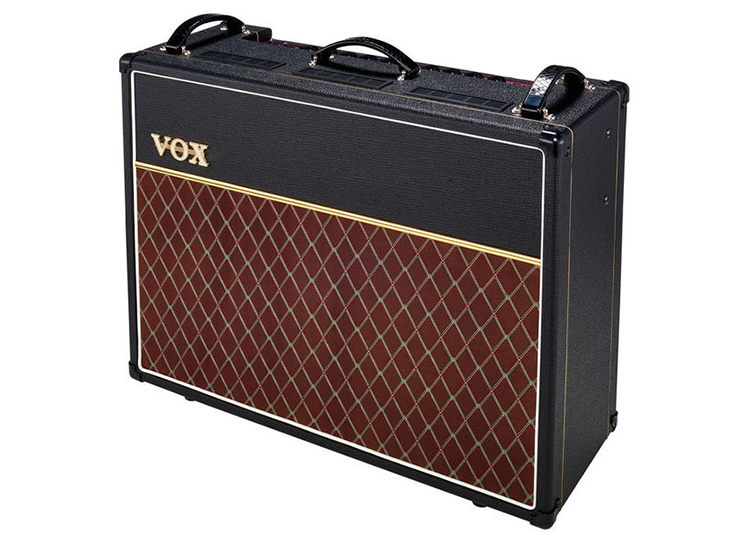
Many of the valve amps we mentioned earlier will serve a similar purpose here, albeit pushed a little harder. Broadly, this area is the domain of the following: the Fender Hot Rod Deluxe, the Vox AC30C2, the Marshall DSL40 and the Blackstar HT Club 40 MK II.
More expensive combo choices include the Mesa/Boogie 5:50+ Express and the Friedman Runt 50 Combo. Bear in mind that at these prices, top end digital modelling units like the Kemper Profiler and the Line 6 Helix are also contenders.
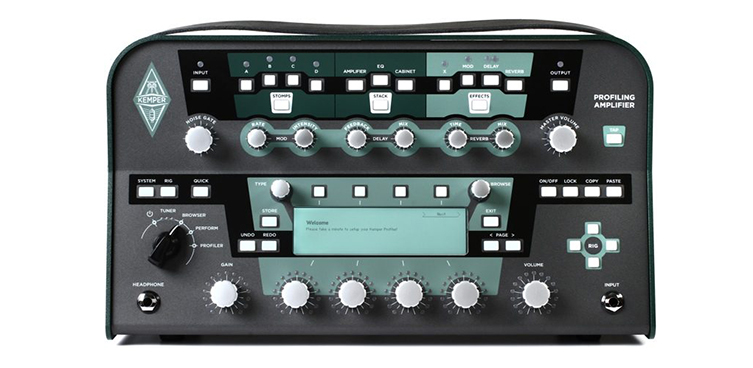
At larger gigs, head and cab half stacks are still a mainstay. Marshall rule the roost here, with the DSL100H head being one of the most familiar sights to audiences everywhere. Boutique amp heads like the Mesa/Boogie Dual Rectifier and the Bogner Shiva are perennially popular, proving that at the top of the price tree, heads and cabs are still the most revered. For many players, playing in front of a roaring full-stack is still a Holy Grail moment and we fully understand it! It is a feeling like no other. We want you to experience it, too!
Solid state users are not left behind, however. The Orange CR120C is a 120-watt combo that will, as the name suggests, crush most other amps in the vicinity. It’s solid state and very impressive indeed. Roland’s Blues Cube Stage amp is a surprise in terms of its remarkably tube-like tone and reaction. Recently, the Cure’s Robert Smith managed to play a huge set at his band’s induction to the Rock ‘n’ Roll Hall of Fame with a humble set of Line Spider V 120 amps! Ever the iconoclast, he managed to make headlines throughout the guitar press and STILL sounded magnificent.
Final Thoughts
It has been a quick trip through the world of amplifiers, and we have but skimmed the surface of the subject here. We encourage further investigation into the different styles, sizes and technologies available: some will work for you better than others, depending on flexibility, features and other aspects.
Remember, it’s absolutely a good idea to have more than one amplifier! This isn’t just sales talk! It makes sense to have an amp that is user-friendly and sounds great at low volumes for the house, particularly one small enough to tidy away after a guitar session! By the same token, an amp that’s good for the stage will have to be bigger, louder and consequently harder to hide in the living room! Horses for courses.
Get yourself down to your local guitarguitar store, take a couple of select amp choices into one of our soundproof booths and see what works for you! Have fun!

